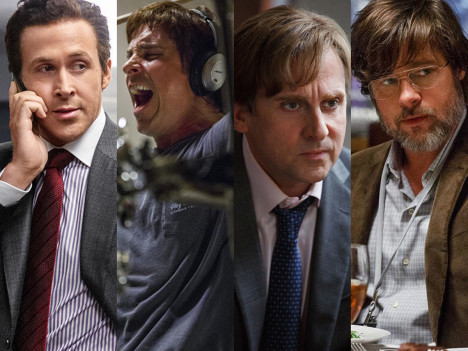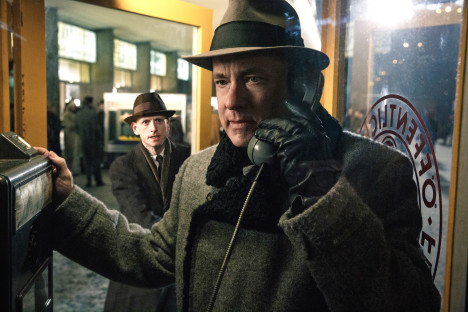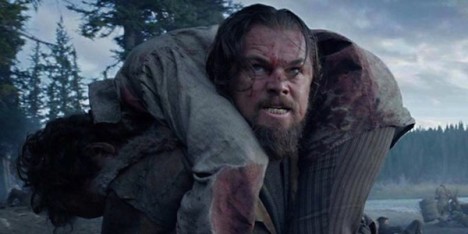How the diversity debate has affected Exponential’s ability to pick the 2016 Oscar winner
 After picking the Best Picture winner at the Oscars using big data analysis for the last three years Bryan Melmed says this year’s picks are clouded by the diversity debate.
After picking the Best Picture winner at the Oscars using big data analysis for the last three years Bryan Melmed says this year’s picks are clouded by the diversity debate.
The Big Short will win Best Picture at the Academy Awards (although this year our prediction could fall short).
Whilst the data behind Exponential’s profiles have predicted the Best Picture winner at the Oscars three years in a row (Birdman in 2015, 12 Years a Slave in 2014 and Argo in 2013) this year all bets are off.
We’ve never seen such muddled signals in the data, in part because the Oscars themselves have become embroiled in controversy. But the outcry over the lack of diversity in this year’s nominations illuminates how we make our predictions (and why it might be our last using this approach).
Methodology
It’s been four years since the Los Angeles Times revealed the homogeneity of the Oscar voters: (Caucasian, male, and with a median age of 62) which (with an entertainment industry qualifier) makes it easy for us to identify users with this profile. Of course it’s anonymous, but social homophily ensures that people who look like an Oscar voter will usually vote like an Oscar voter.
Our targeted profile produces a small audience (106,425 users) so to make a more robust prediction, we compare the full set of characteristics and preferences for our Oscar voters (some 5,168 statistically significant behaviors) against the audience profiles favouring each Best Picture. The closest alignment between the two is the winner.
Controversy
But this year’s #OscarSoWhite controversy makes it difficult. Increased attention and the politicisation of the process adds noise to the data and makes voting patterns less predictable. And this may be the last year we can use this approach, because the Academy has announced changes to ensure its members are younger and more racially diverse.
Bridge Over Troubled Water
That said our analysis begins with Brooklyn and Bridge of Spies. Demographics alone might indicate a win. Brooklyn has the oldest (67) and whitest audience, whilst Bridge of Spies has the second oldest and the third whitest, just short of The Big Short. But dig deeper, and neither group aligns with the Oscar voter profile.
Brooklyn fans just aren’t that into film – they are 24% less likely to follow any movie and the second least interested in film festivals (after fans of The Martian). In addition as the least concerned about water conservation and the least likely to drive or even own a car, the audience has the weakest correlation to Los Angeles. Bridge of Spies fans are overwhelmingly conservative. They support lowering taxes and freezing immigration and are 13 times more likely to have considered emergency preparedness. In short, neither are Oscar voters.
Teenagers from Mars
The Martian and Mad Max have the youngest audiences, although there’s a surprising amount of diversity in each group with some concerned about acne and others arthritis. For The Martian, this variance extends to income with some hitting our Oscar voter profile. And its audience has the most graduate degrees which could bode well. However, although they are 6.4 times more likely to follow the news they are the least interested in celebrities, which likely rules it out.
At first glance we might write off Mad Max as its fans seem to fit the movie theme, being 4.6 times more interested in pick-up trucks, 13.6 times more interested in combat sports, 7.14 times more likely to be in the military and have the highest number of viewers without a college education.
But then we see on the flip side they have the second highest percentage of graduate school alumni (after The Martian) and are most likely to donate to liberal causes.
What is going on? Basically, for every five fans following the action, there is one admiring the cinematography. But the latter are independent artisans not studio types – highly likely to be architects and contractors and drive Subarus and Mazdas. They are also one of two Best Picture audiences (along with The Room) that would rather attend a music festival than a film festival. So, they are out.
Gone and Found
Things get much trickier from here with the remaining films having similar profiles. Each is wealthy, Caucasian, older, and spending heavily on arts and entertainment. But a closer look suggests neither The Revenant nor Room will win.
For Room, the most telling distinction is that the audience is evenly split by gender. Every other Best Picture audience (like the Academy) is dominated by men. It also has the wealthiest and most charitable audience, a pattern we do not find among Oscar voters (and a common misconception).
Further, although this audience seems like a Los Angeles stereotype, being 9.2 times more likely to own a Tesla and a striking 20.6 times more likely to be wearing an expensive fashion brand, this is not the profile of a voter.
As for The Revenant, its potential Oscar voters are dominated by a larger fan base that is way too conservative and religious. This group is the second most likely to support Donald Trump, prefer bourbon to wine, hunting to skiing, and are the most likely to own a diesel truck or a four-wheel drive SUV.
What Does Your Soul Look Like
Picking between the last movies standing – The Big Short or Spotlight – is incredibly difficult. There is a huge audience overlap – sharing almost 95% of the 10,116 behavioral indicators identified. Slim margins indeed.
Most indicators favour The Big Short. It is the most popular in Los Angeles and New York, the second most Caucasian audience and the top pick of big spenders on entertainment, readers who follow celebrities, and users of video editing software.
The Big Short fans are a stunning 56.8 times more likely to be reading news about film production. But the audience is younger and wealthier than Oscar voters, with a median age of 43 and more millionaires by percentage than any other group. And Spotlight has the edge with film festival attendees, Broadway fans and those in the television industry.
There are two ways to resolve this impasse. One is to see the ranking of Spotlight and the Big Short among audiences of the films we think will lose.
The Academy employs a preferential system that reassigns these votes to second, third, or even fourth preferences. Our data suggests Spotlight would take the audiences of Brooklyn and Room and The Big Short the vote of Bridge of Spies, Mad Max, The Martian, and (although close) The Revenant. Ergo the winner is The Big Short.
The second approach is the analysis of the data by our marketing team. We know the typical voter is a he, a frequent traveler, invests in home theater systems, follows baseball and tennis, is concerned about privacy and Social Security, buys expensive watches, and drives a European luxury car.
And the same is true for Big Short fans (except in that basketball tops baseball and the cars come from Asian luxury brands).
Very little of this holds for the Spotlight fan, who is one-third as likely to invest in home theater and one-eighth as likely to buy an expensive watch. Winner, again, The Big Short.
But it’s a very close call. I may short my own prediction.
Bryan Melmed is the vice president of insights for Exponential









great
User ID not verified.